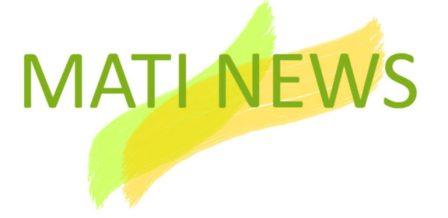Here is a sample question paper for assessing candidates applying for a finance and banking teaching position. This paper includes questions from various topics related to finance and banking:
Finance and Banking Question Paper
Section A: Multiple Choice Questions (Answer any 10 out of 12) (2 marks each)

What is the primary objective of the Basel III Accord?
a) Enhancing the credit rating agencies
b) Reducing market liquidity
c) Strengthening the capital requirements
d) None of the above
What is the formula for calculating the current ratio?
a) Current Assets / Current Liabilities
b) Current Liabilities / Current Assets
c) Total Assets / Total Liabilities
d) None of the above
Which financial market trades short-term debt securities?
a) Money market
b) Capital market
c) Derivatives market
d) Foreign exchange market
What is the purpose of a ‘SWIFT code’ in international banking?
a) Identifying bank branches
b) Determining interest rates
c) Assessing credit risk
d) None of the above
What does the term ‘Liquidity Risk’ refer to in banking?
a) Risk associated with the inability to meet short-term obligations
b) Risk associated with market fluctuations
c) Risk associated with credit defaults
d) None of the above
What is the main function of the Securities and Exchange Commission (SEC)?
a) Regulating the stock market
b) Controlling the foreign exchange market
c) Monitoring the money market
d) None of the above
What is the key difference between a forward contract and a futures contract?
a) Futures contracts are standardized, whereas forward contracts are not.
b) Forward contracts are exchange-traded, whereas futures contracts are not.
c) Forward contracts have no expiration date, whereas futures contracts do.
d) None of the above
What is the purpose of the Dodd-Frank Act in the United States?
a) Regulating the banking sector
b) Controlling the insurance industry
c) Monitoring the real estate market
d) None of the above
What does the term ‘Moral Hazard’ refer to in the context of banking?
a) Risk arising from unpredictable market changes
b) Risk arising from fraudulent activities
c) Risk arising from asymmetric information
d) None of the above
What is the primary function of the International Monetary Fund (IMF)?
a) Providing loans to developing countries
b) Regulating global stock exchanges
c) Managing the international trade agreements
d) None of the above
Section B: Short Answer Questions (Answer any 4 out of 6) (5 marks each)
- Explain the term ‘Time Value of Money’ and its significance in financial decision-making.
- Discuss the key components of the Islamic banking system and its fundamental principles.
- Elaborate on the concept of ‘Capital Asset Pricing Model’ (CAPM) and its role in investment analysis.
- Describe the various types of risks associated with international banking and how banks can effectively manage these risks.
- Analyze the impacts of the 2008 global financial crisis on the banking sector and the regulatory reforms implemented post-crisis.
- Compare and contrast the roles of commercial banks and investment banks in the financial system.
Section C: Essay Questions (Answer any 2 out of 3) (10 marks each)
- Critically evaluate the role of central banks in regulating the monetary policy and ensuring financial stability in an economy.
- Discuss the implications of the emergence of financial technology (Fintech) on the traditional banking sector and the challenges it poses to the industry.
- Assess the ethical issues and challenges in modern banking and finance, highlighting the importance of ethical practices in sustaining a stable financial system.
Here are the answers for the Question and Answer paper for Finance & Banking teacher exam.
Section A: Multiple Choice Questions
c) Strengthening the capital requirements
a) Current Assets / Current Liabilities
a) Money market
a) Identifying bank branches
a) Risk associated with the inability to meet short-term obligations
a) Regulating the stock market
a) Futures contracts are standardized, whereas forward contracts are not.
a) Regulating the banking sector
c) Risk arising from asymmetric information
a) Providing loans to developing countries
Section B: Short Answer Questions
Answer 1
The time value of money is the concept that a specific sum of money today is worth more than the same sum in the future due to its earning potential. This concept is vital in financial decision-making as it helps in evaluating investment opportunities, determining loan terms, and understanding the impact of inflation and interest rates on the value of money over time.
Answer 2
Islamic banking operates based on the principles of Sharia law, prohibiting interest (riba) and investments in businesses that are considered haram (forbidden). Its key components include profit-sharing (Mudarabah), cost-plus financing (Murabaha), and leasing (Ijarah), among others, ensuring ethical and fair financial practices in accordance with Islamic principles.
Answer 3
The Capital Asset Pricing Model (CAPM) is a financial model used to determine the expected return on an asset based on its systematic risk. It helps in assessing the required rate of return on an investment relative to the market return and the asset’s beta coefficient, thus aiding investors in making informed decisions about their investment portfolios.
Answer 4
The risks associated with international banking include foreign exchange risk, political risk, sovereign risk, and cross-border transaction risk. Banks can manage these risks through the use of financial derivatives, hedging strategies, and conducting thorough risk assessments before engaging in international transactions.
Answer 5
The 2008 global financial crisis significantly impacted the banking sector, leading to increased regulatory scrutiny and the implementation of reforms such as the Dodd-Frank Act in the United States. These reforms aimed to enhance financial stability, increase transparency, and mitigate the risks associated with complex financial instruments and excessive risk-taking by financial institutions.
Answer 6
Commercial banks primarily focus on providing various financial services to individuals and businesses, including deposits, loans, and basic financial products. Investment banks, on the other hand, specialize in assisting corporations and governments in raising capital through activities such as underwriting, mergers and acquisitions, and trading of securities.
Section C: Essay Questions
Answer 1
The role of central banks in regulating the monetary policy is crucial for maintaining price stability, controlling inflation, and fostering economic growth. Additionally, central banks play a pivotal role in supervising the banking system, managing foreign exchange reserves, and acting as lenders of last resort during financial crises, thereby ensuring the stability of the financial system and the overall economy.
Answer 2
The emergence of financial technology (Fintech) has revolutionized the traditional banking sector by introducing innovative digital solutions for financial transactions, lending, and investment management. While Fintech offers convenience and efficiency, it poses challenges to the traditional banking industry, including cybersecurity risks, regulatory compliance, and potential disruptions to the traditional banking business model, necessitating adaptive strategies to stay competitive in the digital era.
Answer 3
Ethical issues in modern banking and finance encompass issues such as insider trading, misleading financial reporting, discriminatory lending practices, and conflicts of interest. Upholding ethical practices is crucial in sustaining a stable financial system, fostering trust among stakeholders, and ensuring fair and transparent financial transactions. Regulatory frameworks, ethical guidelines, and robust compliance mechanisms are essential in mitigating ethical risks and promoting integrity within the banking and financial industry.
These answers can serve as a guideline, but please ensure that the candidates’ responses are comprehensive and demonstrate a deep understanding of the topics.





















